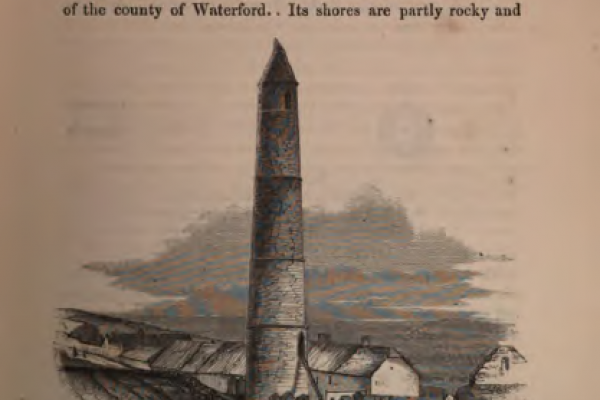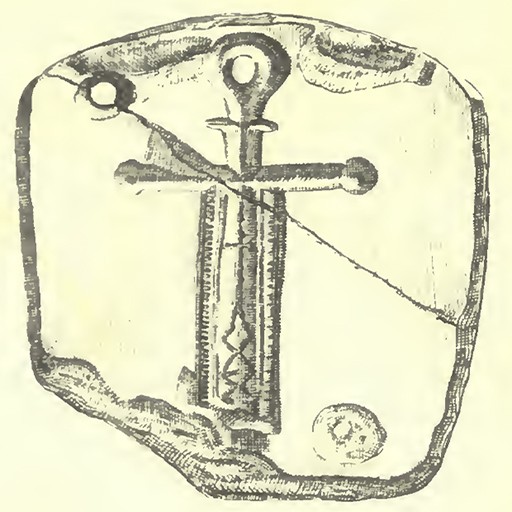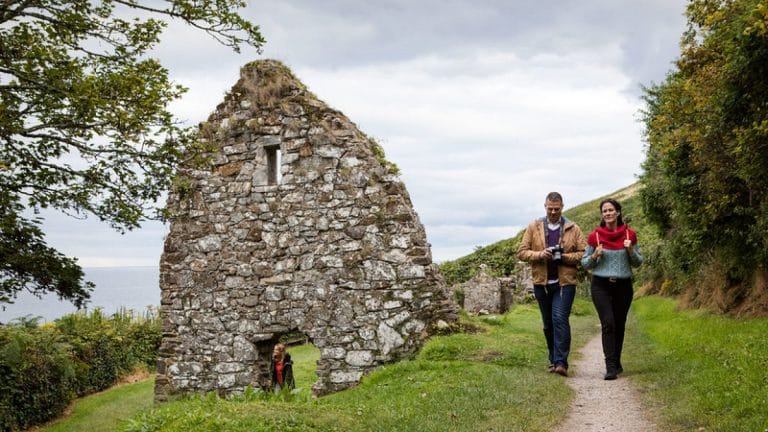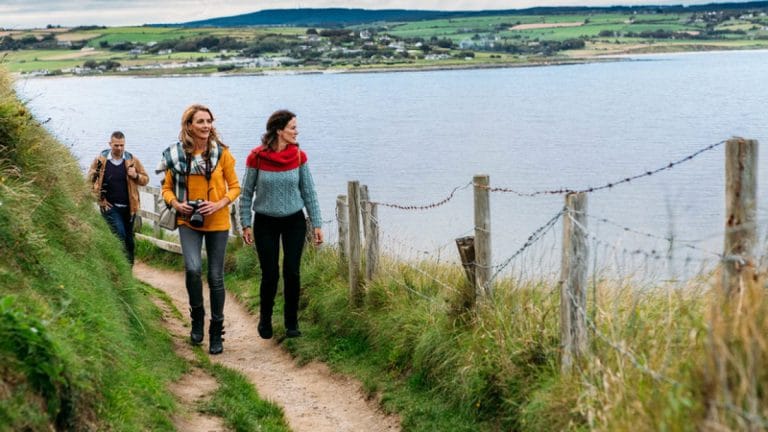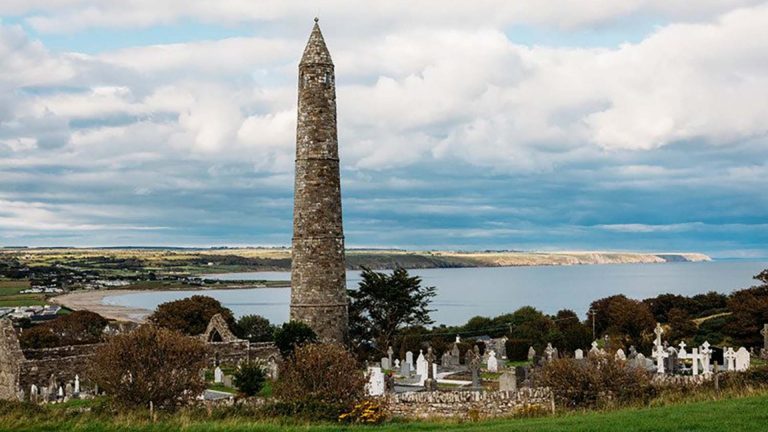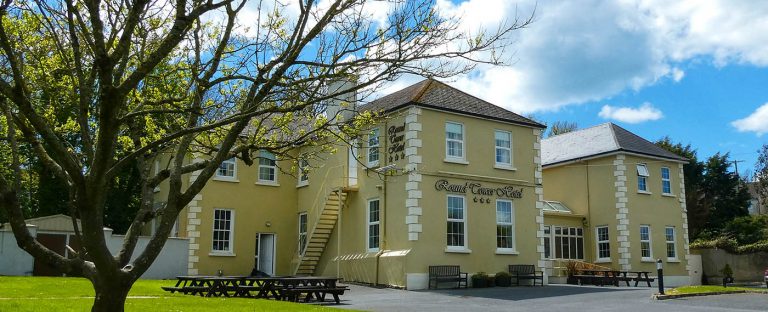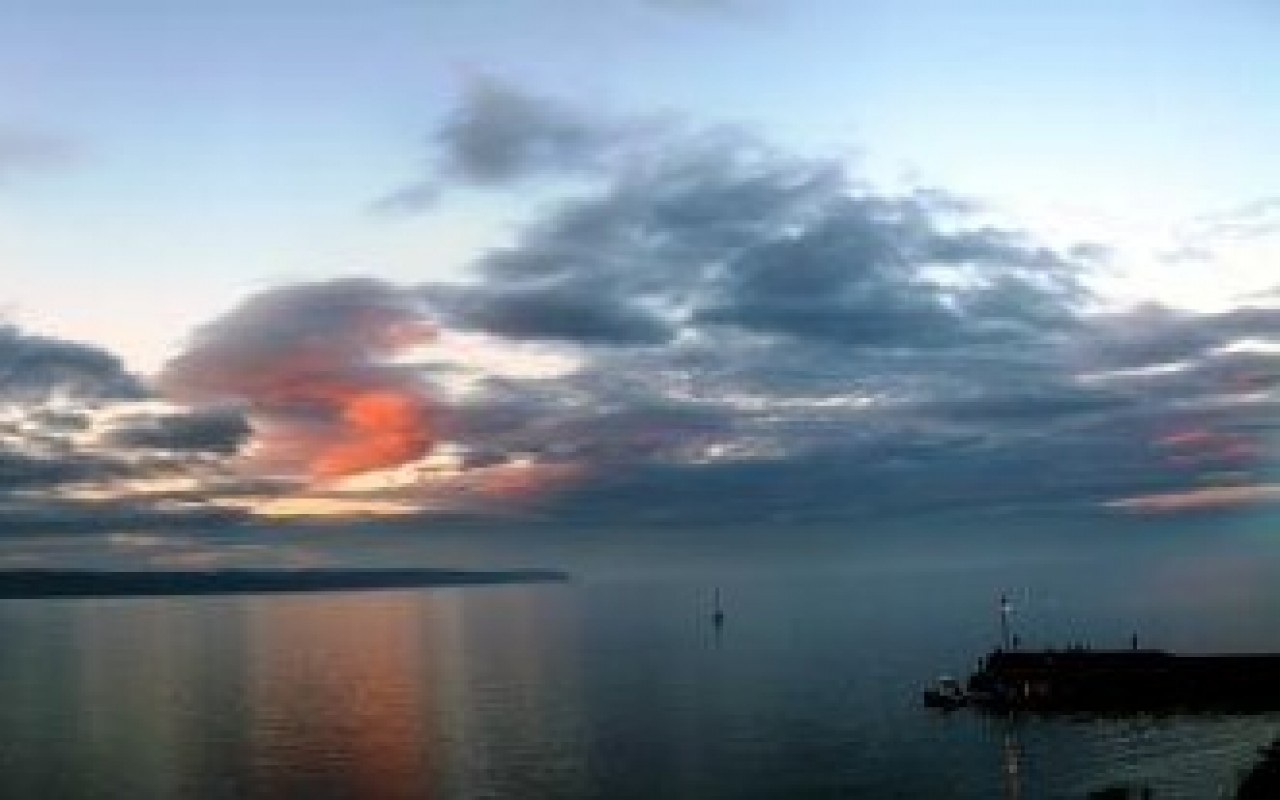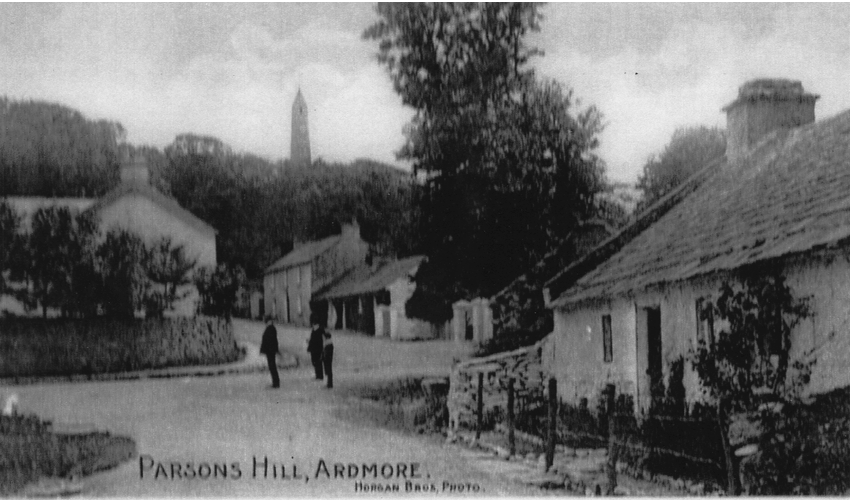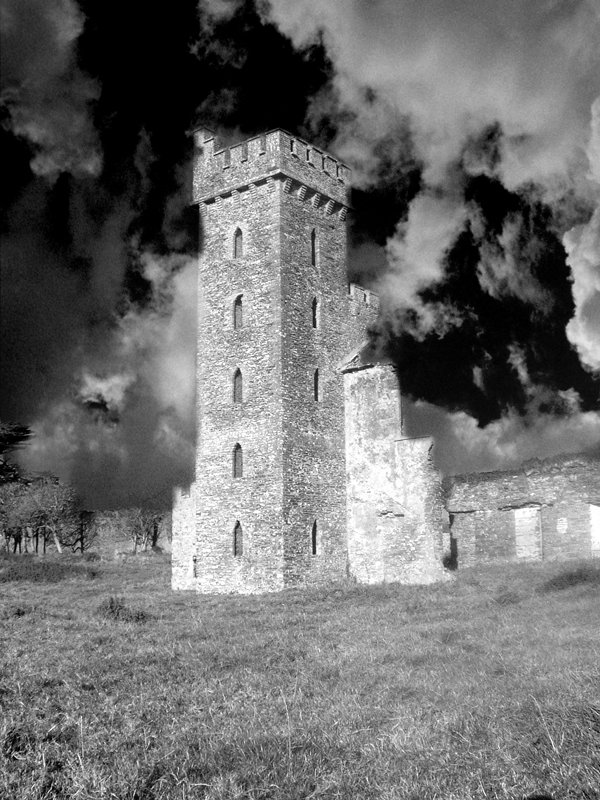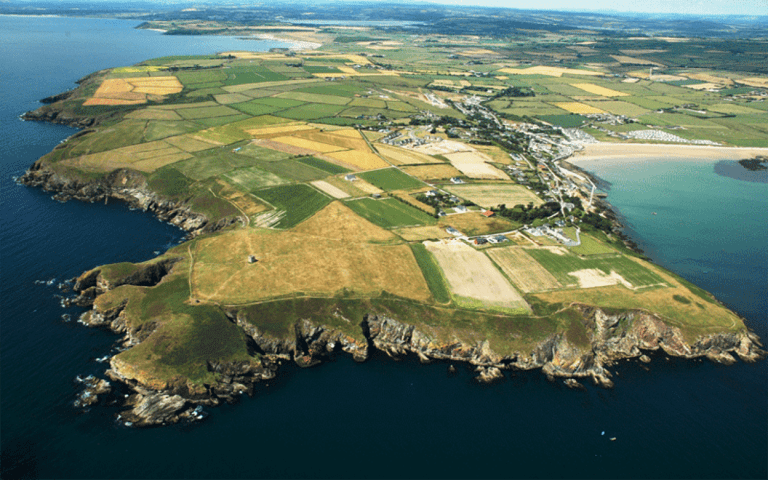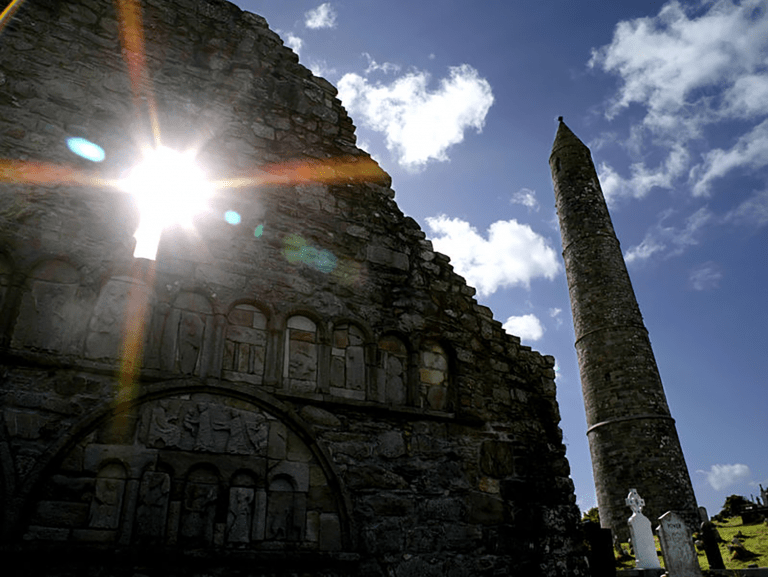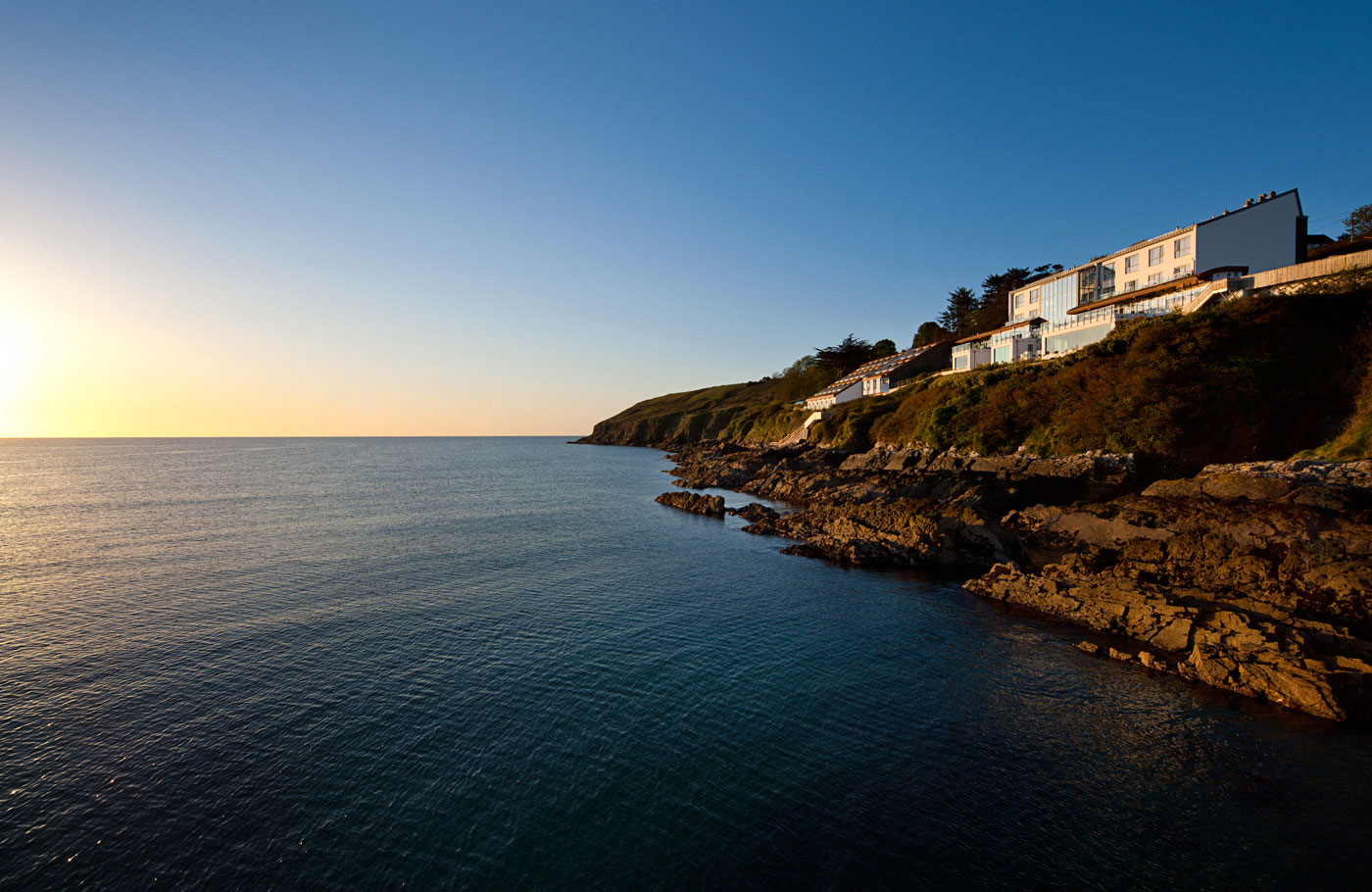Ardmore, County Waterford, is steeped in rich history and folklore, particularly surrounding the legendary figure of Saint Declan. While many may associate him with this charming village, the truth about his origins is as fascinating as the tales themselves. Join us on a journey to uncover the mysteries of Saint Declan’s birthplace and the enchanting stories that surround it!
The Myth and the Man
Saint Declan is a pivotal figure in Irish history, known for his role in spreading Christianity across the land. But did you know that he wasn’t born in Ardmore? The search for his true birthplace leads us to Ardmore, a small townland nestled between Lismore and Cappoquin. Here lies a site that whispers stories of ancient times—a place where history and legend intertwine.
A Glimpse into History
In the late 19th century, the Reverend F. O’Brien penned an insightful article titled “The Birthplace of Saint Declan,” which first appeared in The Journal of the Waterford & South-East of Ireland Archaeological Society. His research highlights the significance of Ardmore, where remnants of an ancient chapel dedicated to Saint Declan can still be found today.
- The Chapel Ruins: Marked on historical maps as “St. Declan’s Chapel in ruins,” these vestiges tell a story of faith and resilience. The structure, measuring approximately 14 feet long and 6 to 8 feet wide, is believed to be one of Ireland’s earliest examples of Christian architecture.
- The Graveyard: Surrounding the chapel is a graveyard, a sacred space that has witnessed countless generations pay their respects to their ancestors and honor Saint Declan’s legacy.
The Journey of Saint Declan
According to historical accounts, Saint Declan was born to Erc and Dethidin in this region around 278 AD. His early life was marked by significant events that shaped his future as a revered saint:
- Baptism by St. Colman: After his birth, he was baptized by St. Colman, who recognized Declan’s potential for greatness and predicted his impactful future.
- Education and Growth: Under the guidance of wise mentors, including Dymma, he flourished in knowledge and spirituality, eventually embarking on a journey to Rome to receive Holy Orders.
- Return to Ireland: Upon returning from Rome, Declan began preaching among the people of the Desii around 402 AD, establishing churches and monasteries throughout the region.
Why Visit Ardmore?
Visiting Ardmore offers more than just a glimpse into history; it’s an opportunity to connect with Ireland’s spiritual roots:
- Historical Significance: Explore the remains of St. Declan’s Chapel and imagine the vibrant community that once thrived around it.
- Scenic Beauty: The surrounding landscape is breathtaking, providing a serene backdrop for reflection and exploration.
- Cultural Connection: Engaging with this site allows you to appreciate the deep cultural heritage that shapes Ardmore and its people today.
Conclusion
Saint Declan’s story is one of inspiration, faith, and resilience—a narrative that continues to resonate through the ages. As you explore Ardmore and its surroundings, take a moment to visit Dromroe and pay homage to this remarkable figure whose legacy has left an indelible mark on Irish history.
So come jump in and discover not just the birthplace of Saint Declan but also the heart and soul of Ardmore—where every stone tells a story waiting to be uncovered!
Citations:
[1] https://www.ardmorewaterford.com/jump-in-and-discover-the-birthplace-of-saint-declan/
Ardmore, County Waterford has had a long association with Saint Declan.
But we know that he was not born here.
You may have already heard magical stories of floating rocks and bells, but here’s another one to unpick.
Where was Saint Declan born?
Here’s an excellent article called “The Birthplace Of Saint Deglan”. The very Reverend F. O’ Brien wrote it. It first appeared in The Journal of the Waterford & South-East of Ireland Archaeological Society, Volume 1 (1894-5), 39-44.
“The better to understand the subject and object of the paper which I am about to read for you, I beg to call your attention to the Ordnance Map of the County of Waterford. You are aware that the eminent men under whose inspection and supervision that map was compiled and published as the result of their survey of Ireland, were accompanied by and had associated with them during their labours two of the most eminent Irish scholars of their time, namely, Mr. Eugene O’Curry and Mr. John O’Donovan. The ordnance surveyors availed themselves of the services of those learned men for the purpose of discovering the names by which the various places they visited had been popularly known, and the history traditionally attached to them. On that map is marked the townland of Dromroe, between Lismore and Cappoquin, on the road between the railway crossing at Round Hill and Tourin. You will find marked there in that townland a small shrubbery within which is a small plot enclosed by a fence, with a representation of a monument in the corner of it Within the same fence you will find marked by dots upon the map the vestiges of the remains of an oblong structure, covered with grass and brambles. The shrubbery and vestiges of remains are designated on the Ordnance Map “ Graveyard and St. Deglan’s Chapel in ruins.” The grass and brambles having been removed, the lower walls of the oblong structure have come to light, made up of stones piled over each other without mortar. Its dimensions are about fourteen feet long by between six and eight feet wide. From the manner in which the stones are placed in the portion of the walls that remain, it is easily conjectured that this ruin belongs to that class of ancient ecclesiastical stone buildings, some of which are to’ be met within a pretty good state of preservation in Ireland at the present day. These are admitted by archaeologists to be the most ancient specimens of Christian buildings to be found in Ireland, and in point of antiquity, that which is the subject of this paper may claim a place among the first.
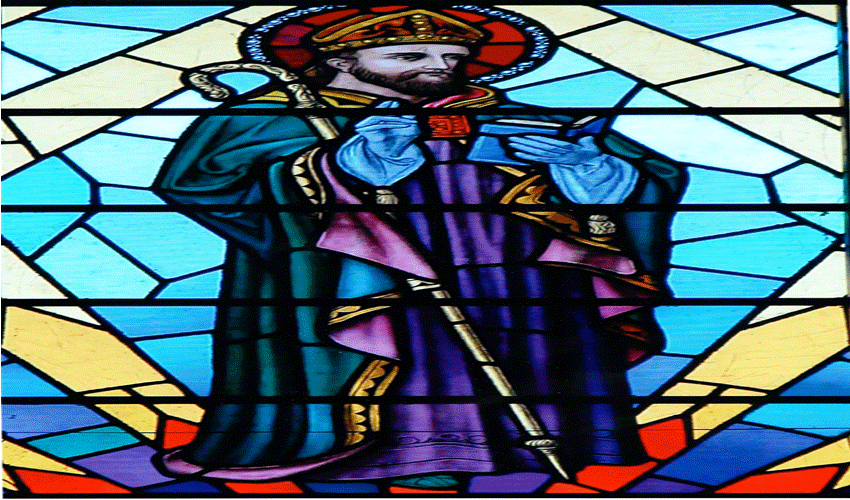
The ruin, as already stated, bore the name of “St. Deglan’s Chapel,” and the land adjoining “graveyard,” when inspections were made and measures were taken for the compilation of the Ordnance Map now more than fifty years ago.
The least curious and most unconcerned about ancient local history visiting this romantic spot, situated, I may truly venture to say, in the loveliest part of Munster, may very naturally ask why was this ruin, which had all but disappeared from the notice as well as from the memory of the neighbouring inhabitants, called “St. Deglan’s Chapel,” and why was the little field surrounding. it, which a short time ago was about being incorporated with the adjoining farm, and from being “God’s Acre ” was to become man’s property, called the “ graveyard,” or, as the people designate it at the present day, religion deaglai. To answer those questions it will be necessary for us to make ourselves acquainted from the most reliable sources within our reach with the history of St. Deglan, who were his ancestors, where was he born, at what time did he live, and why was this ruin called after him “St. Deglan’s Chapel.”
We learn from the Bollandists, on the authority of Colgan, Ware, and Usher, that the ancestors of St. Deglan belonged to a colony who had come from Tara, or rather who had been expelled from a place there called the Desii, and who had settled- down in the County of Waterford, and had called the place of their new settlement after that from which they had been expelled, the Nan Desii. Their expulsion from Tara took place, according to Smith in his history of the County and City of Waterford, about the year 278. We do not exactly know how soon after the settlement of this colony in the Desii St. Deglan was born, but it is pretty certain some considerable time must have elapsed. Smith also mentions that the part of the country in which they settled extended from the river Suir to the sea, and from Lismore to Creadan Head, comprising, in a manner, all the country at present known as the County of Waterford.
We are told that St. Deglan’s father’s name was Erc, and that his mother’s name was Dethidin. We are told, too, that Erc, St. Deglan’s father, being invited to the house of a relative called Dobraun or Dobhran, besides many other companions, was accompanied by his wife, Dethidin, and that during this their visit to their relative, Dobhran, Dethidin, the wife of Erc, gave birth to St. Deglan. This particular place in which St. Deglan was born is stated by the Bollandists, on the authority of Colgan, supported by Usher and Ware, to be situated in the southern part, of the Desii. To use the original words of the writers, “In australi plaga N. Desii,” -in the southern part of the Desii. The barony of the Desii, as you are aware, begins a very short distance below or to the south of this spot, so that it is accurately described as being in the Southern part of the barony of the Desii. It is stated, too, on the authority of the same writers, to be situated in the eastern part of the country, which the Scoti, a name by which the ancient Irish were then known, called mag sciat, or the Plain of the Shields or Bucklers. To give the original language of the writers, “ In orientali seilicet plaga campi quem scoti vacant mag sciat campum scuti.” Smith states that the country around Lismore was anciently known by this name, and the spot to which I am now calling your attention is in the eastern part of this locality. The Bollandists, moreover, as if, to leave nothing wanting as to accuracy in defining this precise spot, state that it is not far distant from the famous City of St Carthage, called Lismore- “Non longe abest a clara Civitate St, Carthagi quae dicitur Lismor,” and that it is distant from the City of Ardmore, where he was afterward Bishop, about thirteen thousand paces or thirteen miles. “Et abest ab Civitate de Ardmore ubi postea fuit Episcopus per tredecim millia passuum.”
We are told that St Coleman, having heard of the birth of the infant, came to the place where he was born and begged of his parents, who were then pagans, to permit him to baptise it and bring the child up a Christian. To this request, the parents consented. And we are also told that Dobhran, in whose house, the infant was born, made a present to St. Deglan’s parents of this the place of his birth, and removed themselves to another place.
Some doubt still exists as to who the St. Colman was who baptized St. Deglan. There were many holy Bishops bearing that name in Ireland so that it is not easy to determine who amongst them is here designated. Neither Usher, who cites extracts from our Saints’ Acts, nor Colgan throws any light on the subject. It appears to me probable that this Colman was the saint of that name who is still venerated in a parish adjoining that of Ardmore called the Old Parish, or as the people there call it, paraiste an tsean pobuil. There is a townland in this parish called Kilcoleman where the remains of an ancient church may be seen and near it a very old tree and well-called tobar colmain, or Colman’s Well. It is generally admitted that there were Christians in Ireland before the coming of Palladius, or St. Deglan, or St. Patrick. St. Prosper, speaking of the mission of Palladius, says—-“ Ad Scotos in Christum Credentes ordinatus a Papa Celestino Palladius primus Episcopus Mittitur.” -To the Scoti or ancient Irish believing in Christ, Palladius is ordained by Pope Celestine and is sent as their first Bishop. We may reasonably believe that such Christians lived in the Old Parish before St. Deglan’s time and that it was, for this reason, it: got the name which it retains to the present day, Old Parish, or Sean Pobul. We may suppose that an acquaintance and an intimacy existed between this St. Colman and St. Deglan’s family before the birth of St. Deglan, as they were near neighbours- St. Deglan’s family and parents we are told inhabited that portion of the Desii around Ardmore.
St. Colman after baptising the infant and predicting many wonderful things as to its future, retired to his habitation with much rejoicing. He recommended that this holy infant should be carefully nursed and that when his seventh year had been attained he should be sent for instruction to a lettered Christian if such a one could be found. Dobhran, the aforesaid kinsman of the chieftain Erc, the father of our saint, on hearing and witnessing those things, earnestly entreated the infant’s parents to deliver this child to him to be nursed and fostered by him, as he had been born at his residence. The parents willingly assented to Dobhran’s request.
At the expiration of the seven years of his tutelage a, religious and wise man, named Dymma, as we are told, had lately arrived in Ireland, which was the country of his birth. Having embraced the Christian religion, to the observances of which he addicted himself, this pious servant of God built a cell in this part of the country. To this teacher, the boy Deglan was entrusted by his parents and foster-father Dobhran according to St. Colman’s directions. Deglan spent much time under Dymma’s teaching, and Usher tells us that he drained large draughts of learning from various mundane and sacred writings. Through this instruction his understanding, we are told, was rendered acute, and he was distinguished for his eloquence.
About this time Deglan resolved to go to Rome, as the Acts of his Life state, that he might there be initiated to a knowledge of ecclesiastical discipline, receive Holy Orders, and a mission to preach from the Apostolic See. The Acts of his Life also state that after some time Deglan was ordained priest and consecrated Bishop by the Sovereign Pontiff, and that he remained in Rome for a considerable time after. At length having obtained some books, a rule for his guidance and mission to teach from the Pope, his Benediction, and also the blessing of the high dignitaries of the Roman Church, Deglan prepared for his return to Ireland, It is related on the authority of Usher, quoted by the Bollandists, that St. Patrick, the future Apostle and Archbishop of Ireland, being then on his way to Rome, met St. Deglan in the north of Italy on his way from Rome, and that both holy persons saluted each other with the kiss of peace and established a mutual friendship before leaving for their respective destinations.
There is some diversity of opinion among ecclesiastical writers as to the precise time St. Deglan arrived in Ardmore on his first return from Rome and fixed his See there, for we are assured that he paid several visits to Rome. Usher, quoted by Smith, states that he commenced his preaching among the people of the Desii about the year 402, or thirty years before the arrival of St. Patrick. He states that he instructed the people with much zeal and success and that many attracted by the fame of his sanctity flocked around him. He built monasteries, churches, and chapels in various places through the country, and amongst others, we are told by the Bollandists, who quote Usher, Ware, and Colgan, that he built a chapel on the very spot he was born. The words of the Bollandists are-“ Ipse enim Dobranus nutritus St. Declani obtulit ipsum locum Sancto Deglano in quo natus fuerat, in quo post multum’tempus Sanctus Declanus cum esset pontifex cellam Deo, aedificavit.“–For Dobhran, the foster-father of St. Deglan, presented the very spot to St. Deglan, that is, the spot on which he was born, on which after a considerable time St. Deglan, when he was bishop, built a chapel in honour of Almighty God. I have reserved this quotation in reference to St. Deglan’s Chapel for the last, as marked on the Ordnance Map, to which I beg to call your attention. Relying on the authority of the writers from whom I have quoted, and the historians through whom the memory of the facts I have stated has been handed down to us, I think we can claim for Dromroe the honour of being St. Deglan’s birthplace, and fix on the very spot on which he was born there, and claim for his chapel, the ruins of which only now remain, an antiquity of fourteen or fifteen hundred years.”
